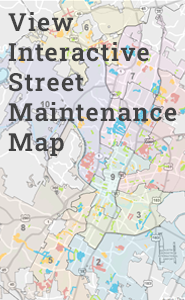The City of Austin Transportation and Public Works Department is one of several governmental departments and agencies responsible for building, maintaining, and planning transportation in Austin. Here is a list of our partners and a little bit about what they do.
Capital Metropolitan Transportation Authority (CapMetro)
CapMetro is responsible for transit service planning, maintenance, and operations in Austin and several surrounding communities. This includes station installation and maintenance, route planning, setting rates of fare, and more for MetroBus, MetroRapid, and MetroRail as well as paratransit and carpool services.
The City of Austin partners with Capital Metro to make transit improvements such as installing transit priority lanes and transit queue jumps to help enhance transit efficiency on Austin’s roadways.
Texas Department of Transportation – Austin District (TxDOT)
The State of Texas' transportation agency manages state and interstate roadways such as I-35, MoPac, SH 71, Loop 360, RM 2222, FM 973, US 183 and more. Additionally, the Texas Department of Transportation operates portions of several arterial roadways that Austin considers "local roads" such as Lamar Boulevard north of US 183, Burnet Road north of US 183, Koenig Lane (aka FM 2222), Manchaca Road, South Congress south of Williamson Creek and more.
The City of Austin works with TxDOT to ensure our communities’ voices are heard during the planning and execution of improvements on TxDOT roads. Additionally, the City partners with TxDOT to manage traffic signals on many TxDOT-owned roadways.
City of Austin Capital Planning Office
The City of Austin’s Capital Planning Office works to create a more robust, comprehensive and integrated Capital Improvement Program (CIP) that supports the City’s goals and priorities through long-range planning, coordination, monitoring and reporting. The Capital Planning Office works with City infrastructure departments, like Transportation, to plan for future infrastructure needs, manages bond development processes, and oversees the delivery of capital projects once a bond program is authorized by the voters.
- Capital Planning Office Website
- CIVIC – Capital Improvements Visualization, Information and Communication
City of Austin Capital Delivery Services
Capital Delivery Services (CDS) builds public projects to support the community. The core of CDS's staff includes engineers, architects and construction professionals with a wealth of experience managing small and large projects.
Capital Area Metropolitan Planning Organization (CAMPO)
CAMPO is the Metropolitan Planning Organization for Bastrop, Burnet, Caldwell, Hays, Travis, and Williamson Counties. CAMPO coordinates regional transportation planning with counties, cities, and local agencies and plays a role in the allocation of federal funds to local entities.
Central Texas Regional Mobility Authority
The Central Texas Regional Mobility Authority is an independent agency created to address traffic congestion in Travis and Williamson Counties. The Mobility Authority is the lead on several projects in our region including the MoPac Improvement Project, MoPac south, 183 North, SH 45 Southwest, Oak Hill Parkway and others.
Travis County Transportation and Natural Resources
Travis County Transportation and Natural Resources provides engineering, design, construction, and maintenance of county roads, drainage and bridges. Portions of the following roads are in Travis County’s jurisdiction: Howard Lane, Braker Lane, Slaughter Lane, William Cannon Drive and more.
Other Partners
- United States Department of Transportation (USDOT)
- Community and Regional Advocacy and Interest Groups – Community Registry
- Capital Area Rural Transportation System (CARTS)


